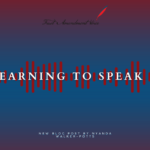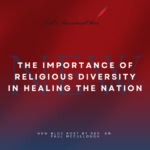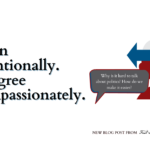
by Dan | Jan 24, 2018 | Uncategorized
 On January 1, Tennessee’s Campus Free Speech Protection Act (Senate Bill 723) went into effect. The law is designed to offer comprehensive protections for free speech rights on college campuses.
On January 1, Tennessee’s Campus Free Speech Protection Act (Senate Bill 723) went into effect. The law is designed to offer comprehensive protections for free speech rights on college campuses.
During a time when free speech freedoms are being heavily restricted by many college campuses nationwide, the new Tennessee measure is a breath of fresh air for First Amendment supporters. As FIRE’s Legislative and Policy Director Joe Cohn stated, “protecting the free speech rights of students and faculty on public college campuses across Tennessee is an important victory for everyone who cares about the future of higher education.”
So what makes Tennessee’s Campus Free Speech Protection Act so important? Here are some provisions that other states should strongly consider adding to their own legislative agendas in 2018:
Freedom of Expression for All
Section 4(b) of the Campus Free Speech Protection Act states: “Public institutions of higher education embrace a commitment to the freedom of speech and expression for all students and all faculty.” This is an enormous step forward in light of recent protests against speakers of certain political affiliations and the suppression of religious minority groups’ freedom of expression on college campuses throughout the country.
Additionally, the inclusion of Section 4(d) attempts to end First Amendment restrictions like “free speech zones” and unequal speaking engagement acceptances by forbidding all public higher education institutions from “[stifling] freedom of speech and expression by implementing vague or overly broad speech codes, establishing free speech zones, imposing unconstitutional prior restraints on speech, or disinviting speakers based on the anticipated reaction or opposition of others to the content of speech.”
Free Speech Protections for Nontenured Faculty
Section 5(2) of the bill defines “faculty” as “tenured and non-tenured professors, adjunct professors, visiting professors, lecturers, graduate student instructors, and those in comparable positions.” Since Section 4 of the bill guarantees freedom of speech and expression for “faculty,” Section 5 expands free speech protections for adjunct professors and graduate student teachers, who have been historically denied true freedom of expression on campus with threats of revoked research funding and/or job loss. Protecting freedom of speech for faculty who — unlike tenured faculty — can be fired from their jobs more easily is an important step towards advancing First Amendment rights for everyone on campuses.
Eliminating Subjective Evaluations About Free Speech
Section 6(3) of the Campus Free Speech Protection Act reads: “An institution shall be committed to maintaining a campus as a marketplace of ideas for all students and all faculty in which the free exchange of ideas is not to be suppressed because the ideas put forth are thought by some or even by most members of the institution’s community to be offensive, unwise, immoral, indecent, disagreeable, conservative, liberal, traditional, radical, or wrong-headed.”
Since many universities nationwide have established committees that unilaterally determine the offensiveness of a speech act (typically based on vague criteria), the Tennessee bill significantly expands freedom of speech for students and faculty by eliminating subjective criteria and promoting campus environments as “marketplaces of ideas” instead.
In conclusion, Tennessee’s Campus Free Speech Protection Act represents a tremendous step in the right direction for protecting First Amendment rights on college campuses. A public institution like a university should not be immune from the fundamental rights guaranteed by our national Constitution, and Tennessee should serve as a model for other states to follow in the coming years.

by Dan | Jan 10, 2018 | Our Voice
The Foundation for Individual Rights in Education (FIRE) recently released their 2018 report on free speech codes on college campuses. The extensive report outlines a ratings system for colleges’ free speech policies, ranging from highly restrictive (red light) to policies that do not seriously threaten or hinder free speech (green light). If you’re concerned about the state of freedom of speech on college campuses, here are some of the most troubling findings from the FIRE report:
Free Speech Restrictions Are Still Significant
Nearly one-third of colleges in FIRE’s report received a red-light rating, which means they have some of the most anti-free speech policies that clearly and significantly restrict individuals’ rights on campus. Although this number is on the decline compared to previous years, this figure is still too high for comfort, considering students’ and college employees’ basic First Amendment rights are at stake.
A Majority of Institutions Have Vague Free Speech Policies
More than 58% of colleges in FIRE’s latest study have vague policies that could either protect or suppress freedom of speech on campus. The wording of these policies are simply too unclear to determine the outcome in potential scenarios, which could lead to dangerous precedents that restrict student and faculty members’ fundamental rights.
Some Colleges Have Implemented “Free Speech Zones”
As we’ve discussed previously, free speech zones on college campuses are likely unconstitutional, drawing from recent court decisions against universities that implemented specific areas of their campuses for open expression. Free speech zones may sound like good ideas initially, until you realize these are actually quite restrictive of students’ and members of the public’s rights to freedom of speech and expression.
If it’s a public community college or university, then why limit freedom of speech to a tiny area of campus? Proponents of free speech zones argue that protests and other disruptive speech acts could hinder students’ ability to get to or concentrate in class. However, these arguments completely ignore the fact that freedom of speech knows no physical boundaries; you cannot limit this freedom to a small, 10′x10′ space on campus. Although one-in-ten colleges currently maintain some kind of free speech zone, the growing number of legal appeals against these zones we’re hopeful that they will be rendered obsolete in the future.
Bias Response Teams Are Evaluating Offensive Speech
According to the FIRE study, 30% of colleges (and more than 50% of private universities) have a “bias response team” on campus. This team is designed to respond to student and faculty reports of speech they deem “offensive” or “hate speech,” either in the classroom, around campus, or elsewhere on the college’s property. Although what constitutes “offensive” speech is largely contestable, these bias response teams use anonymous reports from students to restrict other students’ freedom of expression.

by Dan | Dec 27, 2017 | Uncategorized
 According to a recent report, freedom of the press worldwide is at its lowest level in more than a decade. This decline has been linked to many different causes, including harassment and violence against journalists, media corruption, Internet censorship, “fake news” rhetoric, and fewer legal protections for those practicing their freedoms of expression.
According to a recent report, freedom of the press worldwide is at its lowest level in more than a decade. This decline has been linked to many different causes, including harassment and violence against journalists, media corruption, Internet censorship, “fake news” rhetoric, and fewer legal protections for those practicing their freedoms of expression.
In 2016, more than 250 journalists were imprisoned and 59 journalists were killed in their line of work. In Mexico alone, there were more than 420 reported attacks against journalists, and even the United Kingdom enacted the Investigatory Powers Act (also known as the “Snoopers’ Charter) to track citizens and journalists online. In Turkey, more than 150 journalists are still in prison and 170 media organizations have been shut down since the 2016 coup.
In the U.S., violence against journalists has also been increasing. Montana congressman Greg Gianforte assaulted a reporter from The Guardian shortly before he was elected to Congress, and Alaskan Senator David Wilson slapped a reporter from the Alaska Dispatch News in the face. Media organizations also have expressed concern about President Trump’s retweet of a GIF in which he threw a body — with a CNN logo as its head — to the ground.
What’s concerning about the latest attacks on our press freedoms is that they’re no longer limited to authoritarian regimes. Democratic countries with longstanding histories of press freedoms are also contributing to the climate of mistrust and violence, oftentimes through public officials trying to discredit credible news organizations and enacting legislation designed to limit press freedoms.
Without a free press, nations cannot remain democratic. Freedom of the press is integral to the well-being of a democracy by informing the public, mediating the relationship between citizens and their political representatives, and holding politicians accountable for their actions, both in office and in their everyday conduct. Since our very tenets of democracy are now at stake, we must come together to promote freedom of the press.
To protect the freedom of the press in both America and globally, citizens must come together and let their voices be heard. By contacting your congressional and local representatives to let them know you deeply value your First Amendment freedoms and want the press to remain free to report on all issues of societal concern without obstruction, you can make a difference. Additionally, you can lend monetary or volunteer support to organizations such as Free Press, which advocate on behalf of journalists and media organizations that want to preserve our most fundamental First Amendment rights.

by Dan | Dec 13, 2017 | Uncategorized
 The free press in American society is under attack by political figures and everyday citizens calling articles written by reputable news organizations “fake news”. It’s an attempt to discredit journalists and diminish the credibility of reports that are seen as critical of politicians and/or government policies. “Fake news” is threatening the very foundations of our First Amendment rights pertaining to both freedom of the press and freedom of expression.
The free press in American society is under attack by political figures and everyday citizens calling articles written by reputable news organizations “fake news”. It’s an attempt to discredit journalists and diminish the credibility of reports that are seen as critical of politicians and/or government policies. “Fake news” is threatening the very foundations of our First Amendment rights pertaining to both freedom of the press and freedom of expression.
There are many different definitions of fake news, but we’ll focus on the main three: 1) Satire/parody, 2) “fake news” rhetoric and 3) Completely false news posing as real. Satire and parody news, such as Last Week Tonight and The Onion, create humorous (and obviously not real) articles meant as entertainment. Satire is a form of humorous critique that may contain elements of truth but presented in an exaggerated way to ridicule or expose the absurdity of a situation.
“Fake news” rhetoric is an entirely different matter. This is a political strategy that is being used to delegitimize traditional (mainstream) news organizations such as CNN, The Washington Post and The New York Times by dismissing reports published or broadcast by these press outlets. NPR refers to “fake news” rhetoric as a form of alternative language, in which anyone of any political affiliation can rebuke a news story they disagree with by calling it “fake news”.
Finally, we have actual fake news, which the Pew Research Center reports is also causing a great deal of confusion in American society. Fake news in this sense refers to completely false stories, which often are used as part of a coordinated effort to sway public opinion and/or as a way to generate ad revenue. A Buzzfeed analysis found that many fake news stories about the 2016 presidential election outperformed real news stories on social media. For example, a fake news story about the Pope endorsing Donald Trump for president received 960,000 shares, comments, and likes on Facebook before the election, while a real news story from The Washington Post about Trump and Hillary Clinton’s histories of corruption received just 849,000 shares, comments, and likes.
How is fake news harming our First Amendment rights? As mentioned previously, the Pew Research Center says “fake news” is hurting our democracy by confusing the public about what is real journalism and facts and what is fake. A 2016 study of more than 376 million Facebook users’ interactions with 900+ media outlets found another problem: People tend to seek out information that aligns with their political views. “Fake news” rhetoric is exacerbating the problem by making it socially acceptable for people to reject legitimate media reports that don’t align with their views as merely “fake.”
The phenomenon of fake news and fake news rhetoric subsequently diminishes the free press protections of the First Amendment by delegitimizing reputable news outlets with a long history of credibility, thereby making it harder for them to report real news. What can we do to combat “fake news” and preserve the freedom of the press? To combat “fake news” and protect our First Amendment rights for all, education is key. We must be diligent as consumers when it comes to determining which news outlets are publishing blatantly false “clickbait” articles for the purpose of making money from ad revenue instead of informing the public about legitimate current events. Facebook, Google, and other online organizations are currently developing new algorithms for detecting fake stories and fake news outlets, but it’s also up to us as responsible Americans to educate ourselves and our communities about media literacy.
HowStuffWorks has published an awesome list of 10 ways to spot fake news stories, which includes double-checking information with other sources, checking the URL of the publisher, being wary of incredulous-sounding headlines, and many more. Facticious also developed a game to help students and everyday Americans alike learn how to detect fake news stories. Although “fake news” rhetoric and fake stories are likely to remain a problem for many years to come, it’s vital that we advocate for real journalism and avoid fake sources that want to make money instead of inform their audiences.

by Dan | Nov 24, 2017 | Uncategorized
 “Free speech zones” were originally created during the Vietnam War as a way to control students’ protests against the war. Nowadays, these spaces are facing greater legal challenges and some judges have ruled that these spaces violate students’ First Amendment rights. Despite the high levels of political polarization in the U.S. currently, it is absolutely crucial that we strive to protect freedom of speech for all citizens.
“Free speech zones” were originally created during the Vietnam War as a way to control students’ protests against the war. Nowadays, these spaces are facing greater legal challenges and some judges have ruled that these spaces violate students’ First Amendment rights. Despite the high levels of political polarization in the U.S. currently, it is absolutely crucial that we strive to protect freedom of speech for all citizens.
The problem with limiting free speech to specified areas is that it’s not as simple as entering the free speech zone and saying anything you want in this designated space. In many cases, protestors need to notify the college or university in advance and not disrupt students’ classes through their vocalization of free speech. In some cases, the free speech zones are available only on a first come, first serve basis. Free speech zones also are restricted to one (usually small) area on a college campus, and campus security might need to get involved if counter-protestors arrive to blockade, verbally (or physically) attack the protestor, and/or if speech is determined to be “disruptive” to campus peace and stability.
On September 30, 2004, U.S. District Judge Sam R. Cummings of the U.S. District Court for the Northern District of Texas ruled that Texas Tech University’s free speech codes banning “insults,” “ridicule,” and “personal attacks” were unconstitutional, as well as the free speech zones that limited freedom of expression for students and outside protestors alike. In the decision, Cummings wrote that students should be able to practice their freedom of speech in areas on campus, “irrespective of whether the university has so designated them or not.”
Other universities and colleges in the U.S. have faced similar legal challenges to their free speech zones, and states including Virginia, Arizona, Kentucky, and Missouri have banned the establishment of free speech zones on campuses on the basis that freedom of speech should not be limited to only one designated area. Many colleges and universities in the U.S. still have free speech zones on their campuses, but those are facing heightened legal scrutiny as individuals and groups dedicated to the preservation of First Amendment rights for all continue challenging the existence of these zones and limitations on free speech in the courtroom.

 On January 1, Tennessee’s Campus Free Speech Protection Act (Senate Bill 723) went into effect. The law is designed to offer comprehensive protections for free speech rights on college campuses.
On January 1, Tennessee’s Campus Free Speech Protection Act (Senate Bill 723) went into effect. The law is designed to offer comprehensive protections for free speech rights on college campuses.


 According to a recent report,
According to a recent report, 
 The free press in American society is under attack by political figures and everyday citizens calling articles written by reputable news organizations “fake news”. It’s an attempt to discredit journalists and diminish the credibility of reports that are seen as critical of politicians and/or government policies. “Fake news” is threatening the very foundations of our First Amendment rights pertaining to both freedom of the press and freedom of expression.
The free press in American society is under attack by political figures and everyday citizens calling articles written by reputable news organizations “fake news”. It’s an attempt to discredit journalists and diminish the credibility of reports that are seen as critical of politicians and/or government policies. “Fake news” is threatening the very foundations of our First Amendment rights pertaining to both freedom of the press and freedom of expression.
 “Free speech zones” were originally created during the Vietnam War as a way to control students’ protests against the war. Nowadays, these spaces are facing greater legal challenges and some judges have ruled that these spaces violate students’ First Amendment rights. Despite the high levels of political polarization in the U.S. currently, it is absolutely crucial that we strive to
“Free speech zones” were originally created during the Vietnam War as a way to control students’ protests against the war. Nowadays, these spaces are facing greater legal challenges and some judges have ruled that these spaces violate students’ First Amendment rights. Despite the high levels of political polarization in the U.S. currently, it is absolutely crucial that we strive to 



